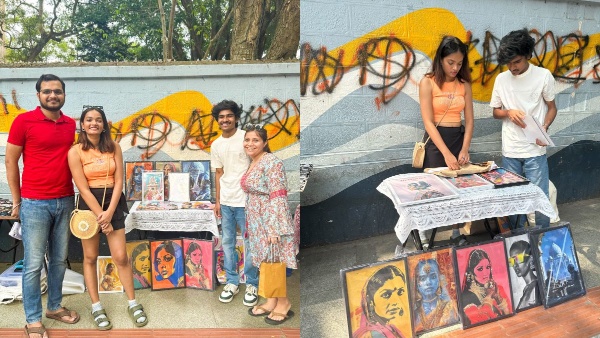Bengaluru
oi-Madhuri Adnal
A
recent
incident
involving
a
19-year-old
artist
selling
AI-generated
art
on
Church
Street
in
Bengaluru
has
ignited
a
debate
about
the
legitimacy
and
implications
of
this
new
art
form.
Ashok
Reddy’s
social
media
post
showcasing
his
stall
went
viral,
but
for
surprising
reasons
–
many
criticized
him
for
selling
“stolen”
and
“lazy”
art.

While
Ashok
was
initially
ecstatic
after
selling
over
100
digital
prints,
the
backlash
on
social
media
was
swift.
Critics
argued
that
AI
art
lacks
originality
and
creativity,
questioning
its
value
as
genuine
artwork.
However,
Ashok
defended
his
work,
stating
that
he
uses
AI
software
like
Midjourney
to
ideate
and
work
on
his
designs,
which
he
then
customises
using
tools
like
Photoshop.
City-based
artists
have
varying
opinions
on
the
use
of
AI
in
art.
Watercolor
artist
Vidya
K
V
sees
AI
art
as
a
reflection
of
contemporary
society
and
a
modern
form
of
expression.
She
believes
that
AI
can
help
improve
art
and
bridge
the
gap
between
the
digital
and
physical
worlds.
Similarly,
Rohini
Sen,
a
faculty
member
at
a
design
school,
views
AI
as
a
tool
to
enhance
creativity
rather
than
replace
it,
emphasizing
the
need
to
embrace
technology
in
the
art
world.
However,
the
debate
extends
beyond
creativity
to
the
question
of
ownership
and
authenticity.
Art
historian
and
photographer
Santanu
Chakraborty
raises
concerns
about
the
ownership
of
AI-generated
art,
highlighting
the
need
for
mechanisms
to
credit
original
artists
whose
works
are
used
to
train
AI
algorithms.
Despite
the
criticism,
Ashok
remains
undeterred
and
plans
to
continue
selling
his
AI-generated
art.
He
emphasizes
the
effort
and
customization
involved
in
creating
his
designs,
aiming
to
blend
futurism
with
Indian
aesthetics.
His
prints
are
priced
between
Rs
220
and
Rs
650,
and
he
plans
to
return
to
Church
Street
with
more
prints
in
the
future.
More From OneIndia
This post was originally published on this site be sure to check out more of their content






